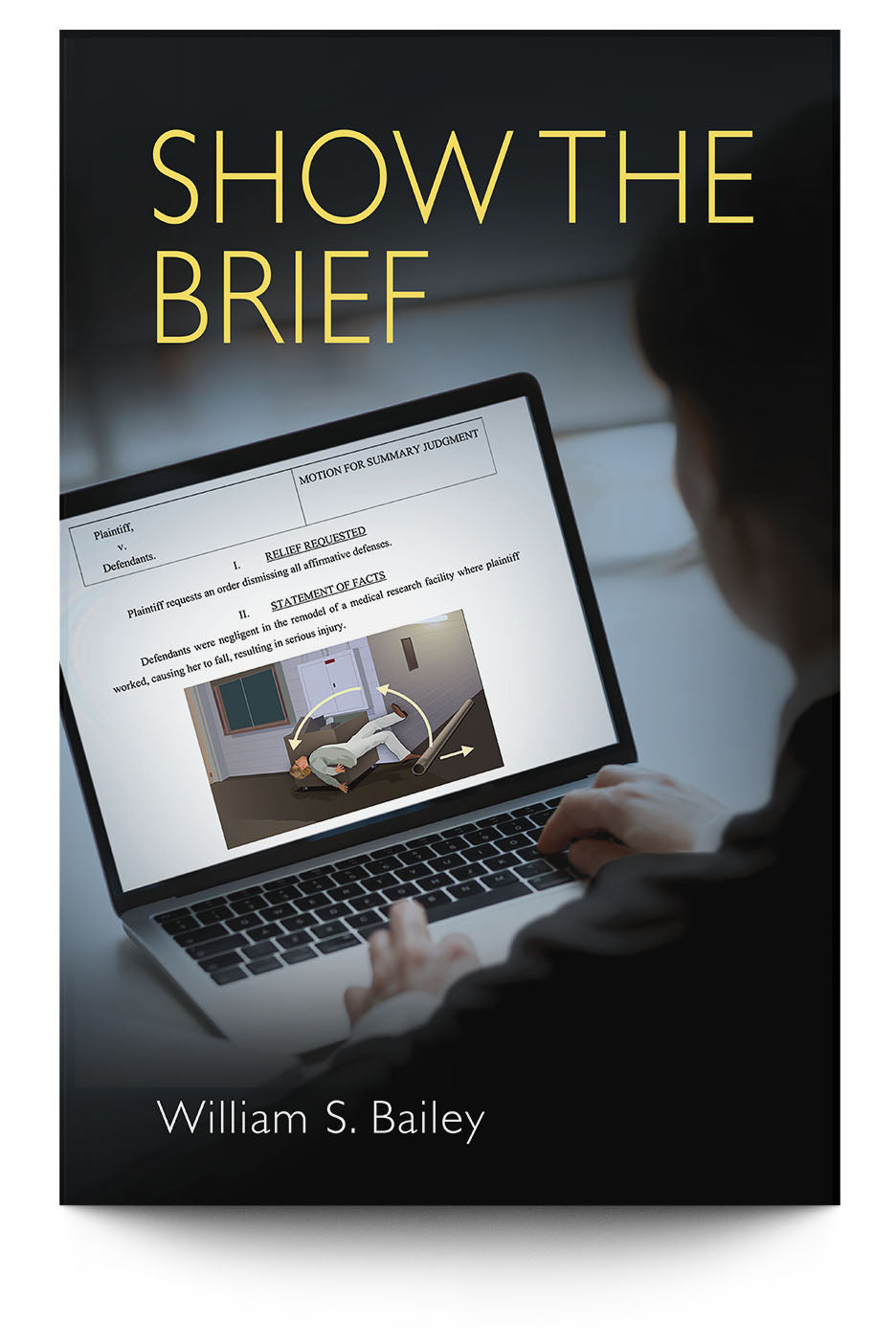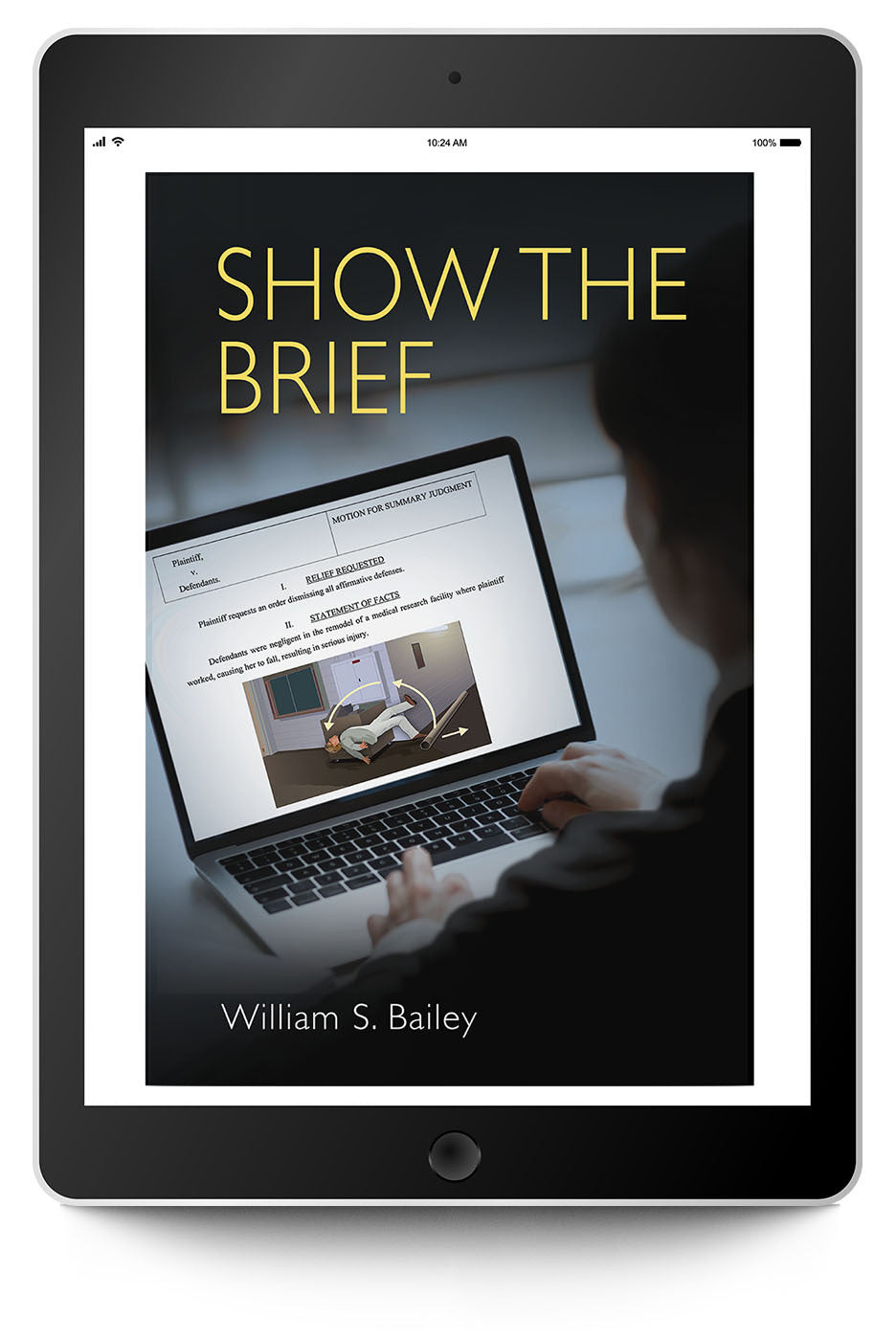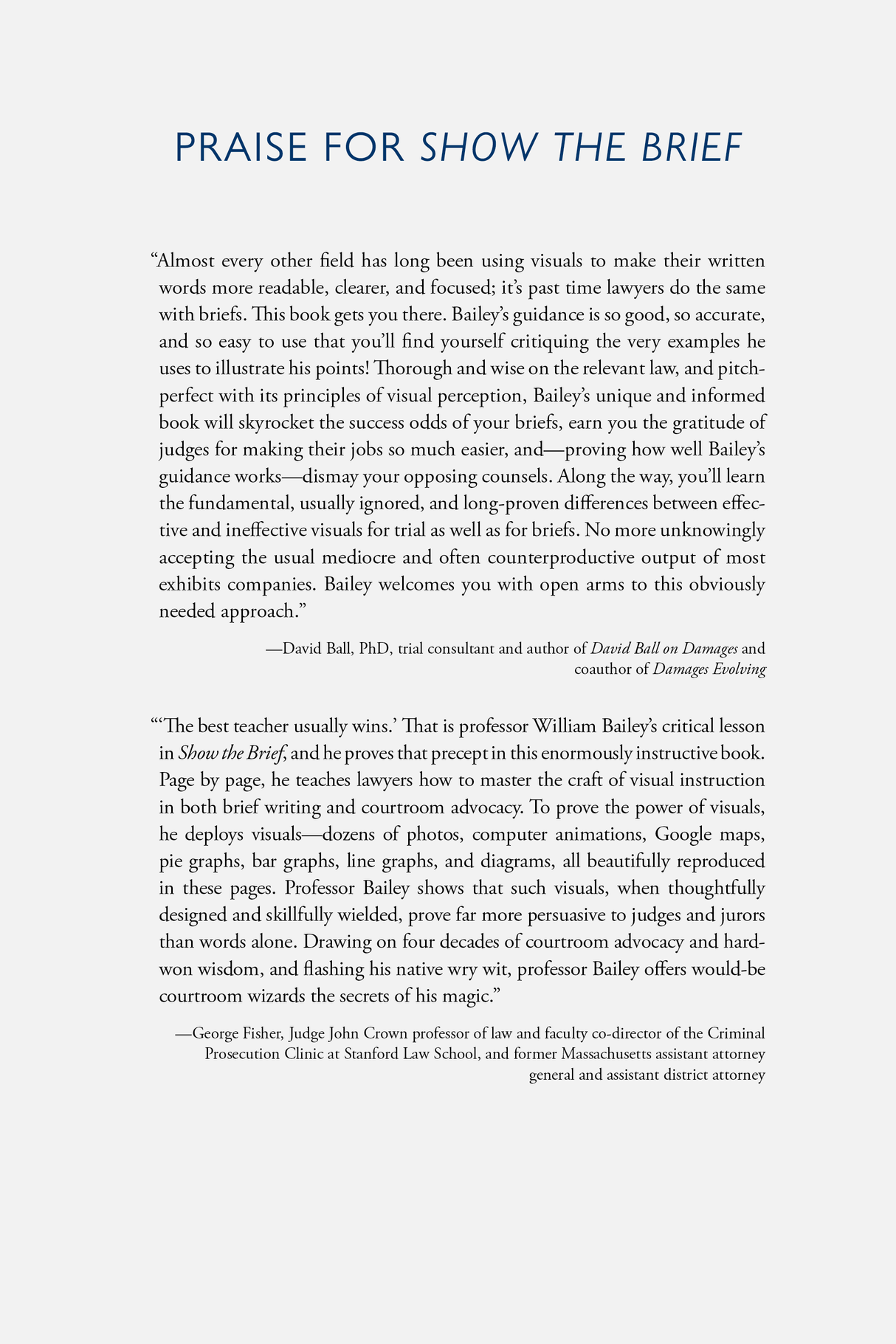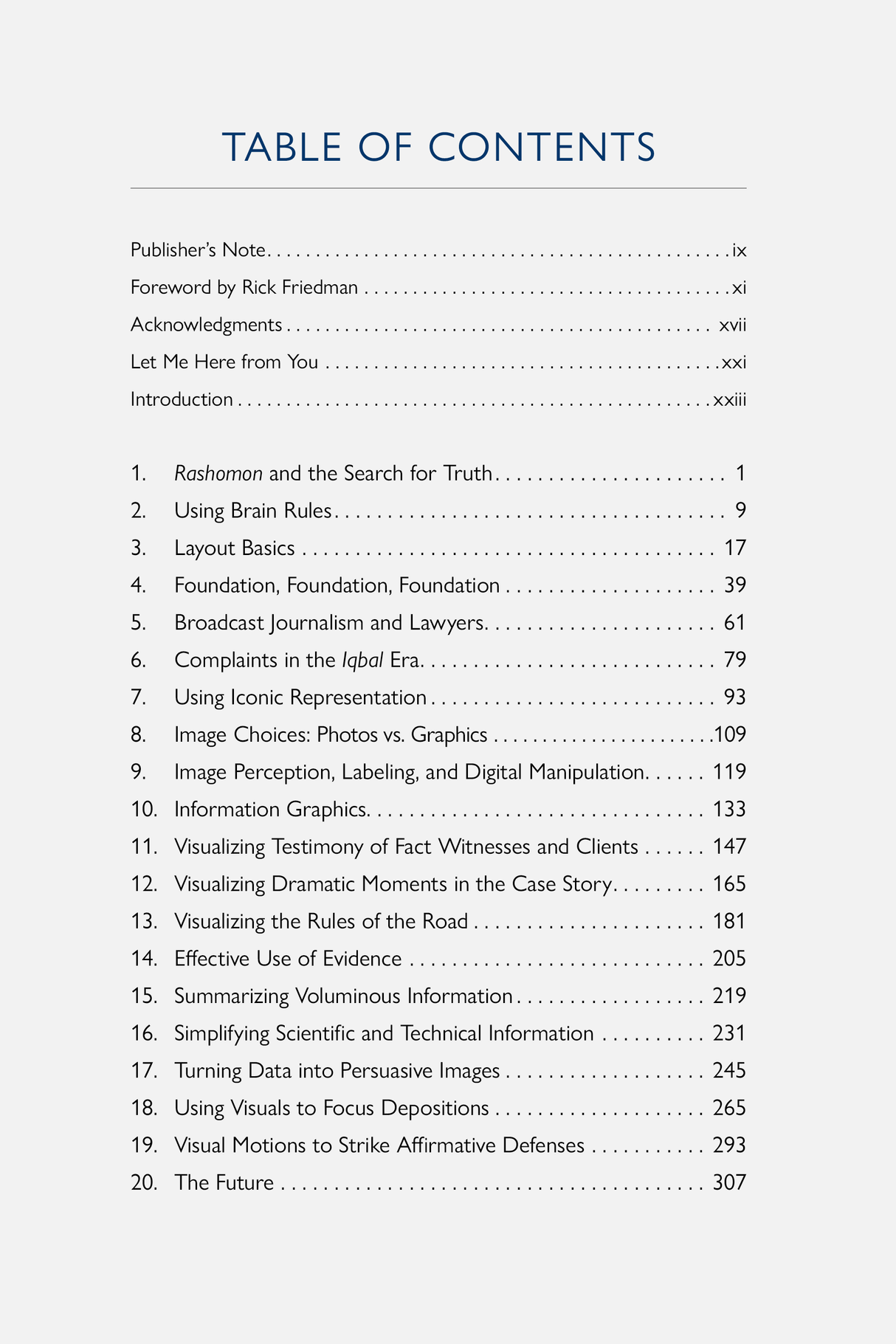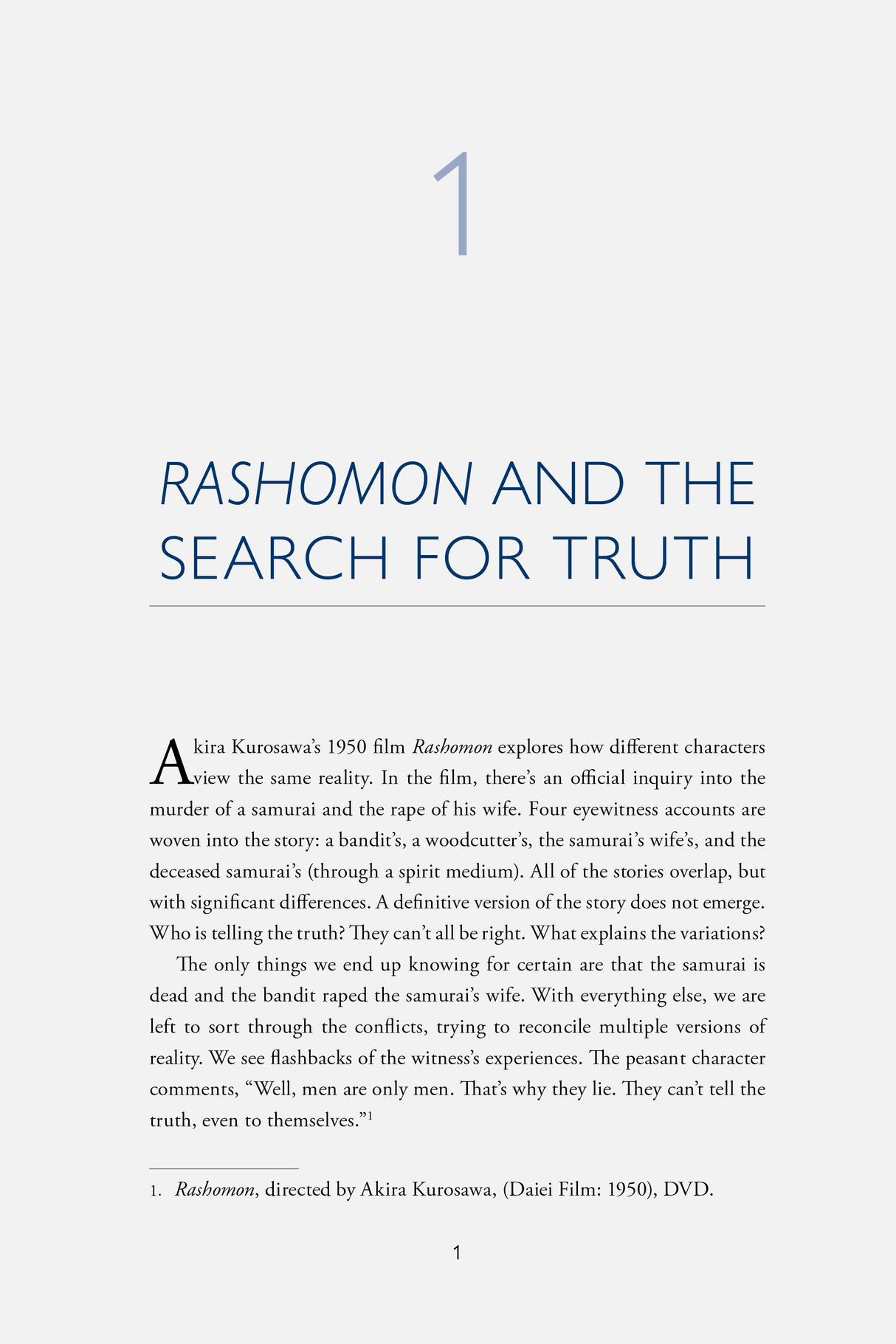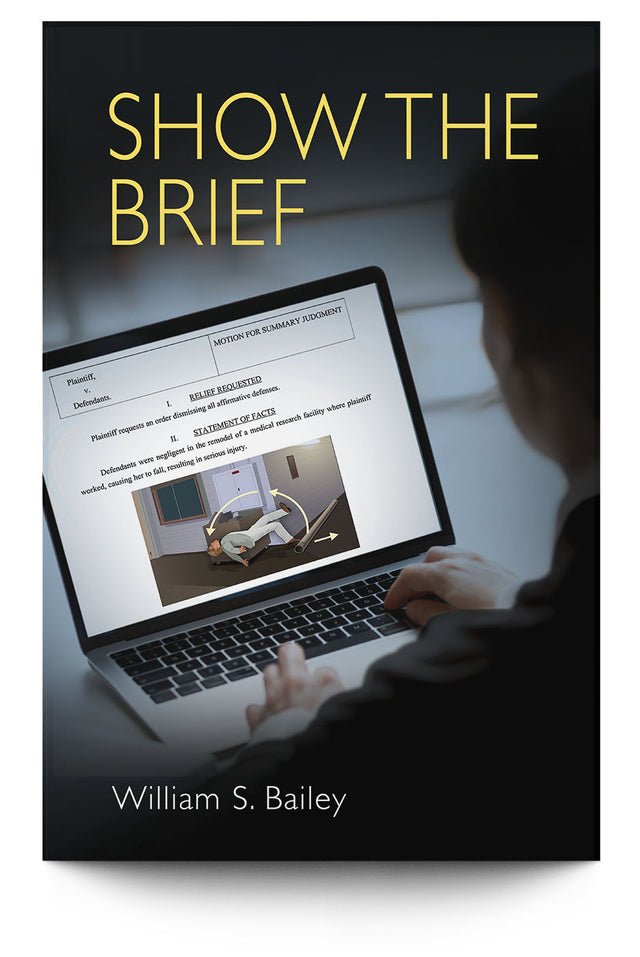Description
Description
In Show the Brief: Visual Writing Strategies and Techniques, trial lawyer and law professor William S. Bailey teaches you how to create legal briefs that powerfully demonstrate the facts of your case in a more effective, and more persuasive, manner.
Over the last twenty-five years, the roles of both trial lawyers and judges have changed. Federal and state procedural rules encourage settlements more and more, often requiring pretrial discovery and alternative dispute resolution. Fewer cases go to trial today than they once did. As judges become increasingly willing to make sweeping pretrial rulings, either granting summary judgment on critical issues—or even out right dismissing a case—the stakes in pretrial motion practice have greatly increased. This has become particularly true in federal court, where outcomes are often far less favorable to plaintiffs overall.
In the intense, busy world of deciding civil cases on crowded dockets, briefs have become more important than ever: Most of the time, judges know how they are going to rule in a case after reading the briefs. They politely let you make your arguments, only to then announce the ruling knew they were going to make at the outset.
Briefs are your best shot to tell the judge why you should win, and why your opponent should lose. The court’s ruling will be driven by your case story and how it plays within the judge’s life experience, values, and understanding of the law.
Plaintiffs’ lawyers no longer have the luxury of reflexively sticking to tradition. You must take your best shot the first time, every time, in all pleadings and documents that you file with the court. The emphasis that once rested on trial now has shifted to pretrial, with depositions and motions often determining the way your case turns out. The time has come for you to use every tool you have in every aspect of your practice—not just during trial and trial preparation, but in each of the pleadings and briefs you file with the court. This means adopting the latest communications lessons from other professions and learning from the latest research in applied psychology to best present your case in every brief you file.
In this book, Bailey covers the following and more:
- Judicial decision making
- Persuasion lessons from applied psychology
- Layout basics
- The Federal Rules of Civil Procedure
- Foundation and admissibility challenges
- What lawyers can learn from broadcast journalism
- Complaints in the Iqbal era
- Using iconic representation
- Image choices: photos versus graphics
- Image perception, labeling, and digital manipulation
- Information graphics
- Visualizing testimony from your fact witnesses and clients
- Visualizing dramatic moments in your case story
- Visualizing the Rules of the Road
- Effectively using evidence
- Summarizing voluminous information
- Simplifying scientific and technical information
- Turning data into persuasive images
- Using visuals to focus depositions
- Using visual motions to strike affirmative defenses
Bailey’s step-by-step approach provides valuable background information from psychology, neuroscience communication, and the graphic arts. The lessons in Show the Brief will teach you how to become a more effective advocate and teacher—all through learning how to use visuals in your briefs and pleadings to make them more effective. In today’s plaintiff’s practice, telling a good story in the briefs you write is just as critical as doing it in person before a jury.
Your eBooks are now accessible from your Trial Guides account! Click here for step by step instructions.
Do you want the eBook and print book? After you complete your purchase of the print book you will receive a coupon code via email to purchase the eBook for $20.
Author
Author
Details
Details
Paperback: 450 pages; 1st Edition (2022); ISBN: 978-1-951962-51-7
Publisher: Trial Guides, LLC
Table of Contents
Table of Contents
Publisher’s Note
Acknowledgments
Foreword by Rick Friedman
Introduction
- Rashomon and the Search for Truth
- Using Brain Rules
- Layout Basics
- Foundation, Foundation, Foundation
- Broadcast Journalism and Lawyers
- Complaints in the Iqbal Era
- Using Iconic Representation
- Image Choices: Photos versus Graphics
- Image Perception, Labeling, and Digital Manipulation
- Information Graphics
- Visualizing Testimony of Fact Witnesses and Clients
- Visualizing Dramatic Moments in the Case Story
- Visualizing the Rules of the Road
- Effective Use of Evidence
- Summarizing Voluminous Information
- Simplifying Scientific and Technical Information
- Turning Data into Persuasive Images
- Using Visuals to Focus Depositions
- Visual Motions to Strike Affirmative Defenses
- The Future
Appendices
- Complaint in Highway Design Case
- Brief to Amend a Complaint in Response to Affirmative Defenses
- Brief to Strike Affirmative Defenses
- Images in Discovery Requests
- Summary Judgment Liability Brief
- Plaintiff’s Motion for Summary Judgment Brief
- Graphic Narrative Brief
- Comic Book Complaint
About the Author
What Legal Leaders Are Saying
— Randy Kinnard, member of the Inner Circle of Advocates and 2020 recipient of the Pursuit of Justice Awards by the American Bar AssociationBill Bailey has done more than any other lawyer I know to help you win your motions. Judges are humans too, and they are influenced and persuaded by visuals like everybody else. Words are, well, just words. Why not give judges more? They want to see and understand just like jurors. Bill Bailey helps you learn to ease the burden on your judge, who no doubt is under a time gun and has little time to read every word of every motion. The tips in this book will increase your victories on motion hearing day. Highly recommend this book!
— Elizabeth Loftus, PhD, past resident of the Association for Psychological Science and Distinguished Professor at the University of California, IrvineTake a creative practicing attorney and brilliant teacher of trial practice, with important ideas about how to be better, and you get William Bailey. In Show the Brief, he has written an exceedingly useful manual on how, in pleadings, to use visuals like police reports, diagrams, documents, or photographs. Drawing on scientific work in psychology, neuroscience, communication, and other fields, his ideas are likely to change the way lawyers communicate and make them vastly better advocates.
— Hon. Lynn Duryee (Ret.), former Marin County Superior Court Judge and coauthor of Mastering Mediation: 50 Essential Tools for the Advanced PractitionerLegal writing is notoriously dull, detailed, and difficult to read. But it need not be. In this ingenious and practical book, Bailey shows lawyers how to revolutionize their writing to engage the reader and win the case. Using real-life examples, he demonstrates the power of images, point of view, and narrative in everyday brief-writing. ‘Briefs are our best shot to tell the judge why we should win,’ says Bailey, explaining how his evidence-based method of showing the story will give the trier of fact a superior understanding of the legal issues. Just as sharp trial lawyers have integrated technology in the trial of their cases, so too will visionary lawyers appreciate how Bailey’s methodology will transform their written submissions to the court. I love this book!
— Hon. William L. Downing (Ret.), former King County Superior Court Trial Judge and deputy prosecutorShow the Brief delivers an invaluable lesson on every page. Drawing on social science, literature, film, and the author’s personal experience, this book will help lawyers at all levels find success through becoming better communicators.
— Rick Friedman, past president of the Inner Circle of Advocates and coauthor of Rules of the RoadMuch of advocacy is simply teaching; teaching the judge or jury the facts, from your point of view, that you want them to understand. For over a hundred years, textbooks of all sorts have had photos, diagrams, and charts. Why not briefs?… [Show the Brief] challenges many unexamined assumptions about what makes a good brief or good legal argument. It will change your ideas about what is possible and what is persuasive. It is like giving a painter a whole new color that’s never been used or viewed by anyone before. This new color is powerful, unusual, and unfamiliar. Using this new color will require you to develop new skills. You will literally start to think differently as you call upon different parts of your brain to join in your advocacy.... I hope you are as excited by the creative possibilities as I am. Before there was writing, we had only oral advocacy. Then, of course, came written advocacy. Now, you have the chance to be one of the early pioneers in visual advocacy. Welcome.
— David Ball, PhD, trial consultant and author of David Ball on Damages and coauthor of Damages EvolvingAlmost every other field has long been using visuals to make their written words more readable, clearer, and focused; it’s past time lawyers do the same with briefs. This book gets you there. Bailey’s guidance is so good, so accurate, and so easy to use that you’ll find yourself critiquing the very examples he uses to illustrate his points! Thorough and wise on the relevant law, and pitch-perfect with its principles of visual perception, Bailey’s unique and informed book will skyrocket the success odds of your briefs, earn you the gratitude of judges for making their jobs so much easier, and—proving how well Bailey’s guidance works—dismay your opposing counsels. Along the way, you’ll learn the fundamental, usually ignored, and long-proven differences between effective and ineffective visuals for trial as well as for briefs. No more unknowingly accepting the usual mediocre and often counterproductive output of most exhibits companies. Bailey welcomes you with open arms to this obviously needed approach.
— George Fisher, Judge John Crown professor of law and faculty co-director of the Criminal Prosecution Clinic at Stanford Law School, and former Massachusetts Assistant Attorney General and Assistant District Attorney‘The best teacher usually wins.’ That is professor William Bailey’s critical lesson in Show the Brief, and he proves that precept in this enormously instructive book. Page by page, he teaches lawyers how to master the craft of visual instruction in both brief writing and courtroom advocacy. To prove the power of visuals, he deploys visuals—dozens of photos, computer animations, Google maps, pie graphs, bar graphs, line graphs, and diagrams, all beautifully reproduced in these pages. Professor Bailey shows that such visuals, when thoughtfully designed and skillfully wielded, prove far more persuasive to judges and jurors than words alone. Drawing on four decades of courtroom advocacy and hard-won wisdom, and flashing his native wry wit, professor Bailey offers would-be courtroom wizards the secrets of his magic.
— Mireille Butler, co-director of legal analysis, research, and writing at the University of Washington School of LawThis book will be of huge interest and appeal to legal writing professors, especially those who teach advanced legal writing, persuasive writing, and trial advocacy. The book is fun and easy to read and has a huge array of practical examples and advice that will benefit all those who want to improve their students' persuasive skills through the use of visual legal writing.

